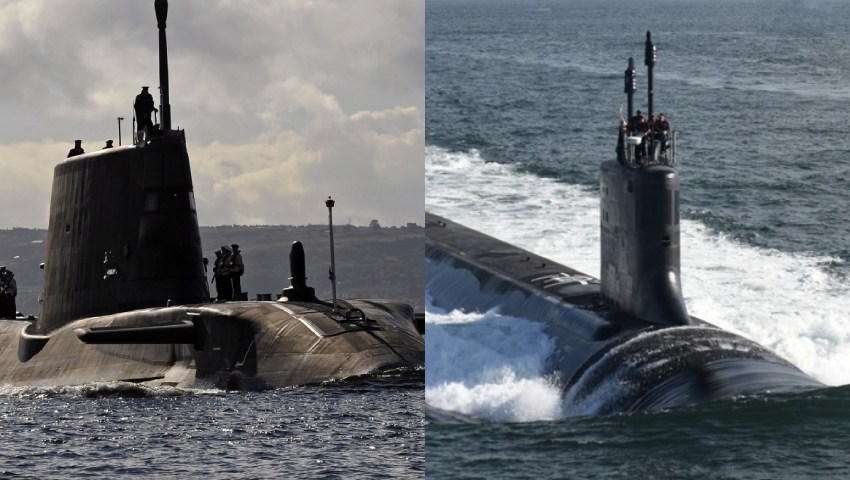While the Commonwealth begins its 18-month review into the creation of a sovereign nuclear-powered submarine capability, former RAN officer and editor of the Nuclear Propulsion Roadmap for Australia Chris Skinner analyses the challenges of spent nuclear fuel disposal.
To continue reading the rest of this article, please log in.
Create free account to get unlimited news articles and more!
At the recent Winter Meeting and Technology Expo of the American Nuclear Society, ANS president Steve Nesbit said of radioactive nuclear waste disposal: "The volume of material is small, proven methodologies exist for processing and disposal, yet with few exceptions, all countries have struggled with ultimate disposal of long-lived radioactive material."
In a similar manner the UK is working on its own solution to the geological disposal of radioactive waste material as reported by Radioactive Waste Management (RWM) on 3 December at its first national conference attracting 150 delegates. The UK is following a nationwide process based on community consent, with progress achieved towards finding a willing community and suitable site for a deep geological disposal facility (GDF).
RWM chair Malcolm Morley OBE reported that working group discussions were underway in three communities: Copeland and Allerdale in Cumbria and Threddlethorpe in Lincolnshire. RWM chief executive Karen Wheeler said: "We are now making real progress and having conversations with a number of communities about the potential for them to host a GDF." The work to deal with the accumulated radioactive materials is expected to require some 20 to 30 years work to complete its disposal.
These current activities are especially prescient for Australia with the latest AUKUS agreement of the three countries including the sharing of nuclear submarine technology. The UK and US submarine designs most likely to be adopted by the Nuclear Powered Submarine Task Force are both based on the use of highly-enriched uranium (HEU) nuclear fuel, which means the submarine reactors do not require refueling for the full service life of the submarine, some 25 to 30 years, but then the reactor must be defueled and the spent fuel processed to remove usable fuel and then the residual long-lived radioactive fission products consigned to a deep geological disposal facility.
While the submarine reactors and initial load of nuclear fuel will be provided by one or other of these countries, it is not reasonable to assume the spent fuel at end of submarine life will be accepted back to those same countries, noting the current state of disposal as described above.
We must therefore consider the requirement for the submarine spent reactor fuel at end-of-service life to be a responsibility for Australia and to plan accordingly. The current work on the Australian Intermediate Level Radioactive Waste Storage Facility near Kimba, on; upper Eyre Peninsula in South Australia, has reached a decision point as reported by the ABC (Napandee chosen as nuclear waste storage site after 'six years of consultation'), "Napandee, a 211-hectare property near the town of Kimba, has been acquired by the government and will be used to store low and medium-level nuclear waste. The property was already selected by the government but it had to allow an additional 60 days of consultation before it could formally declare the site."
The federal Minister for Resources and Water Keith Pitt announced the decision on 29th November saying: "Following further consultation, the Australian government today confirmed that a site for the location of our country’s National Radioactive Waste Management Facility (NRWMF) has been selected, near the town of Kimba in South Australia.
"The government has acquired approximately 211 hectares of land at Napandee, 24 kilometres west of Kimba, where the facility will be built after detailed designs, technical and heritage studies are completed.
"Under the relevant legislation, the effect of the declaration is that the land is acquired by Commonwealth."
The implication of this decision for the nuclear submarine program is to show that concern for the full extent of the nuclear fuel cycle is relevant even if the development of the Australian NRWMF was not predicated on either the advent of nuclear propulsion with spent fuel to be managed, nor of the need to provide a permanent disposal facility for high level waste such as unprocessed spent fuel.
There has been public speculation that the AUKUS agreement would lead to a submarine acquisition program that included the return to the source country of the reactor sections of the submarines at end of life but this might well be resisted as an unreasonable imposition on the agreement signatories and would be regrettable if this became a stumbling block.
And with the starting of the Australian program concurrent with what is happening in UK and USA there would seem to be a good case for collaboration on this aspect of the nuclear fuel cycle as in other nuclear technology matters.
Christopher Skinner served 30 years in the Australian Navy as a weapons and electrical engineer officer in six surface warships. His interest in nuclear power for submarines is more recent and is reflected in his membership of the Engineers Australia, Sydney Division Nuclear Engineering Panel, the Australian Nuclear Association and the American Nuclear Society. He is also associated with several other organisations and institutes engaged in geopolitics, technology and submarine matters. The views expressed above are entirely those of the author and are not endorsed by any of the organisations of which he is a member.

 Login
Login







